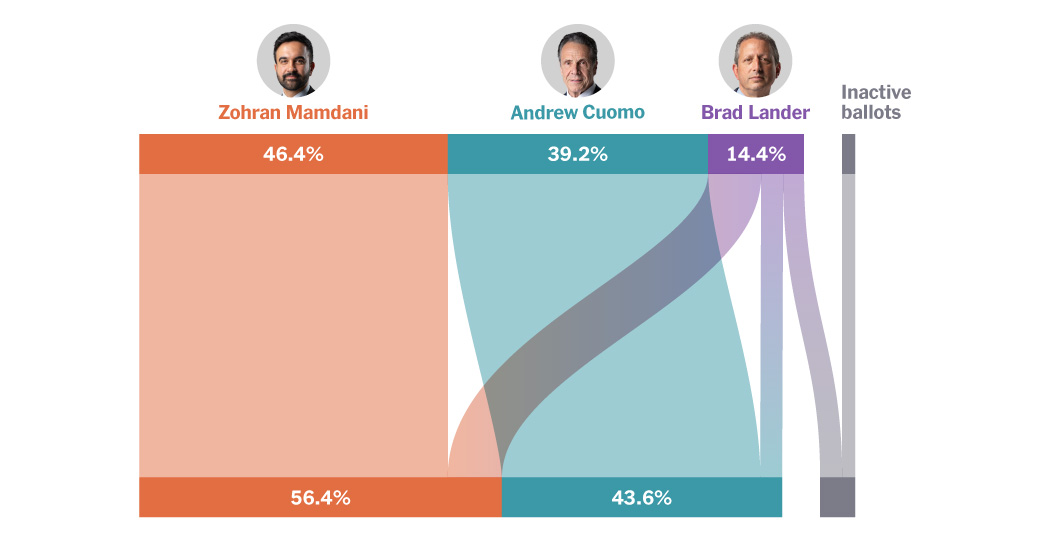The Democratic primary for mayor of New York City in June was the second major election in which the city used ranked-choice voting. The results show that voters and campaigns are becoming more sophisticated in how they use the system.
The race had two clear front-runners, Assemblyman Zohran Mamdani and former Gov. Andrew M. Cuomo. Mr. Mamdani ultimately benefited more from ranked choices, especially after his cross-endorsement with Brad Lander, the city comptroller who finished third. A majority of voters, responding to a campaign led by Mr. Cuomo’s foes and critics, left him off their ballots entirely.
After the first-choice votes were tallied, Mr. Mamdani and Mr. Cuomo were so far ahead of the pack that it was mathematically impossible for anyone else to win. So as the tabulation continued, all the other candidates were eliminated in one batch.
But to dig deeper, The New York Times analyzed the ranked-choice data pulled from each voter’s ballot to show exactly how the field reduced from 11 to two, as each last place candidate was eliminated and their votes were redistributed after each round of vote counting:
The data implies that New York City voters are getting used to ranked-choice voting. In the 2021 Democratic primary, more than 140,000 ballots were inactive by the final round. This year, there were roughly 55,000 inactive ballots, signaling a greater understanding of the system. Nearly half of voters used all five of their ballot choices this time around, up from 40 percent four years ago.
Candidates are learning how to better navigate the system too. The Mamdani-Lander cross-endorsement proved to be a strong strategy, as did the anti-Cuomo campaign, known as D.R.E.A.M. (Don’t Rank Evil Andrew for Mayor).
Mamdani voters followed a ranked-choice strategy. Cuomo supporters did not.
The share of candidates ranked in each position among ballots that listed Mamdani, Cuomo and Lander first.
Ranked-choice voting will not be used in the general election this November, so the candidate with the most votes will win, period. But it will be back for the 2029 primary, and the campaigns will surely use these results to inform their strategies.
